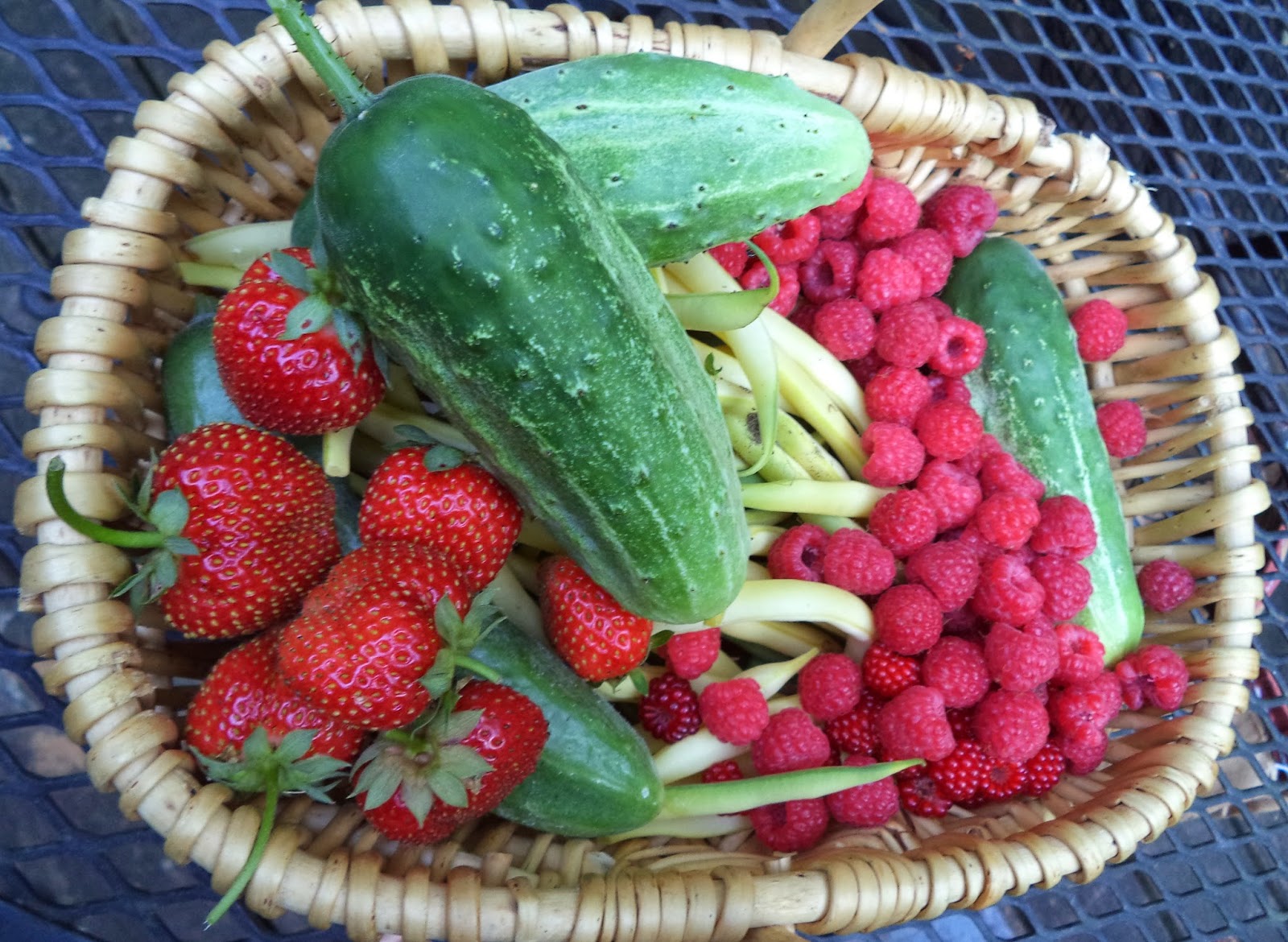 |
| Multiplying onions approaching harvest time. |
In spite of running a bit behind, the garden is doing well enough. The onion family bed will be ready to harvest soon. The necks of the multiplying onions are getting soft, making the leaves fall over. The leaves of the garlic and shallots are beginning to show a little more brown, too, which is a good sign at this point in the season.
We are bringing in a few strawberries most days, and I have been grazing on raspberries, which means I haven't been bringing them in to weigh. I don't think they would add much to the yearly total, but I just am not ever going to know; it's too hard to see them and NOT eat them right away!
The green beans have been making it to the kitchen, which makes me pretty happy. Many other local gardeners have been begun to harvest zucchini and yellow squash, cucumbers, and peppers. We've been getting those out at the farm where we volunteer on the weekends, but in my own yard those are not yet ready. I was late getting them planted. When it got right down to priorities, planting at the farm, which feeds lots of people, was a more valuable use of time.
 |
| Still getting strawberries! |
 |
| Popcorn crop making progress. |
 |
| Tomatoes looking good. |
Another use of my time in the past week or so was writing a blog post about growing peanuts in the home garden for the National Peanut Board. I am happy to be able to say that the post is up! It is called (not too surprisingly) "
How to grow peanuts in your own garden."
You can see my seedling peanuts in the nearly-bare ground in front of my popcorn. The two rows have come up, and the little plants look great!
 |
| I really should have thinned the Asiatic lilies... |
Elsewhere in the garden, tomatoes, peppers, and tomatillos are making their fruits, the potato foliage is turning yellow and falling over (a signal that harvest time is approaching!), the sweet potatoes finally are planted (hooray!), little okra seedlings are popping up, squash plants of various kinds are making some big leaves, and flowers of several types are adding to the chaos of luxuriant growth.
Hope all the other gardens out there are growing well!










